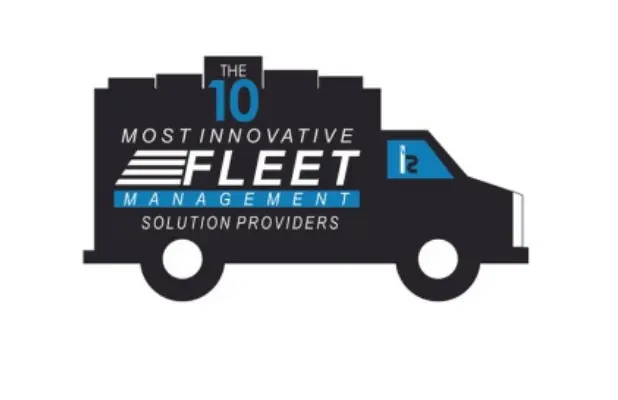Why a policy is important
Risky behavior that happens in the driver’s seat often goes unnoticed by fleet managers, and it presents a continuous threat to an organization’s operations. Recent reports show how even the most seemingly innocent unsafe driving habits, like cell phone use, can lead to big damages:
- An overwhelming 324,819 people get injured in a single year because of distracted driving, including risky behavior by commercial drivers.
- Fraudulent accident claims result in 20 billion dollars per year in losses to insurers, which inflates insurance premiums for everyone.
These threats result in much more than just financial losses, but also a major negative impact to a fleet’s operations and, in the case of fatalities, severe damage to a fleet’s reputation.
On the other hand, fleets using dash cameras and driver coaching strategies see accident rates drop by as much as 80%. In addition, managers report that it’s easier to reconstruct accidents and justify the driver’s behavior with footage since 68% of drivers tend to forget key events during accidents.
However, the conversation doesn’t end once the cameras are installed. The single most critical element to a successful dash cam program is a well-engineered, transparent, and driver-friendly dash cam policy. It helps you protect your assets and empower and defend your drivers.
Why Design a Dash Cam Policy
Many drivers, when faced with the prospect of an in-cab camera capturing footage, feel a sense of apprehension. Concerns about being constantly monitored, data being used punitively, and a general invasion of privacy are valid and must be addressed proactively.
That’s why the dash camera policy becomes more than just a legal document. It’s your commitment to fostering a genuine safety culture and a transition of the perception of your dash cam initiative from “we’re watching you” to “we’re protecting us”.
Dash Cam Legal Considerations: Party Consent
Legal considerations are important when implementing dash cameras. A comprehensive policy is your first line of defense, as it demonstrates due diligence and a proactive approach to complying with a complex web of privacy laws. You need this tool because the legal landscape surrounding video recording, and particularly audio recording, is a patchwork of state-level legislation.
For instance, California, Florida, and Pennsylvania are “two-party consent” or “all-party consent” states, meaning you must have explicit consent from everyone involved in a conversation to record it. Other states operate under “one-party consent,” where only one participant, such as the driver who is an employee, needs to be aware of the recording.
A well-defined policy, which includes clear consent clauses, will help you navigate these specific regulations without inviting legal issues. Therefore, the dash cam policy is as much a tool for driver protection as it is for the company.
Architecting Your Policy: From Legalese to Plain English
A dash cam policy needs to establish a consistent framework that governs the use of dash cams and their footage, so everything looks fair and transparent across your entire fleet. Its goals include preventing any accusations of favoritism or the misuse of recorded data.
The heart of your initiative lies in the policy document itself. It needs to be comprehensive, yet easily digestible. The best piece of advice is to avoid convoluted legal jargon in favor of direct language. Feel free to use the following as a guide for crafting your dash cam policy.
A. How It Works
Transparency starts with demystifying the technology. In the first section, you’ll need to explain the hardware you’re implementing:
Camera type
State whether the cameras are front-facing, dual-facing (road and in-cab), or if they utilize AI. It’s best to be very upfront about the AI capabilities, like fatigue or distracted driving detection.
Recording triggers
Detail what activates recordings. Is it continuous, is it triggered by certain events like harsh braking, rapid acceleration, cornering, or is it manually activated by the driver?
Data storage
Define the data retention period. A common standard is 30 to 90 days for non-event footage. Explain that the video footage is automatically overwritten after this period unless it’s flagged as an incident to be reviewed.
B. What We Monitor
This section will address any privacy concerns. It is here where you need to be as explicit as possible about the behaviors that you are monitoring:
Driving behaviors
List all the actions that will be flagged, such as speeding, hard braking, and speeding. If using AI, mention that it can detect actions like cell phone use, unbuckled driving, eating, drinking, lane departures, or signs of drowsiness.
Scope of monitoring
Reassure drivers that the system is not for monitoring private conversations or off-duty activities. Clarify that audio recording is either disabled or is used in compliance with consent requirements.

C. Who Has Access
Another primary driver concern is who will be reviewing the video footage, that’s why you need the section explaining system access:
Authorized personnel
List the job titles of individuals who can access the footage, such as the Safety Manager, Fleet Manager, or CEO. Thus, you’ll prevent the perception that anyone in the office can spy on drivers’ activities.
Driver access
Emphasize that drivers will have the right to review any footage of an incident that they are involved in. This will reinforce the policy’s role in their protection.

D. How We Use the Information
This section is your opportunity to frame the program as a positive and coaching-centric initiative.
Positive Reinforcement
“Drivers who maintain a high safety score, as determined by the dash cam system, over a calendar quarter will be entered into a drawing for a $500 gift card.”
Such a statement will show your commitment to rewarding safe driving habits.
Coaching, Not Punishment
“Flagged events will be used as coaching opportunities. For instance, a pattern of close following will trigger a one-on-one review with a safety manager to discuss safe following distances and defensive driving techniques.”
This is a good way to position the footage as a tool for improvement, not just for immediate discipline.
Disciplinary Action
You should also outline a tiered process for addressing repeated or serious violations. These can range from verbal coaching sessions to written warnings, and finally, to more severe disciplinary actions for egregious offenses like reckless driving.
Legal Protection
State that the footage will be used as legal evidence in the event of an accident to defend both the company and the driver from false accusations and fraudulent insurance claims.

E. The Driver's Role and Responsibilities
Emphasize device integrity. Drivers should not tamper with, disable, or obstruct the view of the dash cam.
Windshield obstruction laws in many states are very specific, and they can limit non-transparent objects to a five-square-inch area in the lower corners of the driver’s windshield or a seven-square-inch area on the passenger side. You need to ensure that the cameras are placed away from the driver’s line of sight, possibly at the upper center of the windshield or near the rearview mirror, depending on your local legal requirements.
This section is the best place to encourage the reporting of malfunctioning cameras. Drivers must report any device malfunctions to the fleet manager immediately.
F. Acknowledgment and Agreement
The policy should conclude with a section where the driver acknowledges that they have read, understood, and agreed to the terms. This signed acknowledgment is a crucial piece of documentation for ensuring compliance and obtaining consent.
Gaining Driver Buy-In with Clear Communication
Like any other initiative and organizational change, the successful rollout of a dash cam policy hinges on effective communication. These three pillars will help persuade drivers to embrace a culture of more responsible behavior while on the roads:
- ▶ Announce your dash cam policy early to give your drivers time to process the change.
- ▶ Hold meetings where drivers can ask questions and voice their concerns to management.
- ▶ Frame the benefits from the driver’s perspective: protection against false claims, exoneration in accidents they didn’t cause, and rewards for safe driving.
A pilot program with a small group of volunteer drivers may also be beneficial. These drivers can then become advocates and share their positive experiences with the rest of the fleet and show the system’s fairness.
Real-World Example: How Footage Fights False Claims
Let’s say one of your drivers is involved in a collision at a four-way intersection with stop signs. The other party vehemently claims that your driver ran the stop sign. Without evidence, this will inevitably result in a costly “he-said, she-said” battle, likely leading to a split-liability insurance decision and a mark on your driver’s record.
Now, replay that same incident with a dash cam. The dash cam footage will provide irrefutable proof that your driver made a complete stop, exonerating them completely and saving the company from a large insurance claim. It’s just one example of how the narrative transforms from one of surveillance to one of security and validation for your fleet drivers.
Dash Camera Footage Is a Tool for Progress
Implementing a dash cam program without a driver-centric policy is a missed opportunity to foster trust, create a genuine safety culture, and take advantage of the protective power of the technology. A dash camera policy made with care is the building component that aligns the interests of the company and its drivers and creates a partnership focused on safety and mutual protection.
It communicates that you’re not just installing cameras to spy on drivers, but investing in a safer future for everyone. Don’t just implement dash cameras to check off a box; take the time to build this policy. It is the most important step in ensuring that your dash cam program is a resounding success.
Take a Virtual Tour of our Dash Camera Solution
Download the dash camera policy guide
Access dash camera policy online eBook
More resources on fleet dash cameras:
Dash camera driver benefits
Dash camera research eGuide
Dash camera case study
New technology implementation strategies

Frequently Asked Questions
What is a dash camera policy?
A dash camera policy is a clear set of rules for using dash cams in fleet vehicles. It’s a document created by fleet managers to make sure that everyone understands why the cameras are there and how they should be used. The main goals are to enhance safety, monitor driver behavior, and protect the company from potential legal issues.
The policy explains things like:
- How dash cameras work
- Why dash cams are being used (e.g., for accident evidence, encouraging safe driving, and GPS tracking)?
- How is personal privacy protected? This includes rules around audio recording, especially when it comes to private conversations.
- Who can view the dash cam footage and what it can be used for? Examples could be for training or during legal proceedings.
- What is expected of fleet drivers. For example, not tampering with the devices and understanding the rules.
For fleet owners, having a solid policy is a key part of effective fleet management.
How do you use a dash camera policy?
Using a dash cam policy means clear communication and consistency. Here’s how fleet managers put it into practice:
- First, ensure that the dash cams are installed correctly. They must not obstruct the driver’s view. Common placements are near the rearview mirror or in the top or bottom corners of the windshield within a seven-inch square area to ensure clear road visibility. The goal is not to block the driver’s vision of the road, other windows, or the rear window.
- Train drivers on the policy. They need to understand the legal requirements and why the cameras are beneficial for their protection.
- Be very clear about recording audio. Due to privacy laws, many companies disable audio recording. If you must record sound, you need to understand your local consent requirements. Some states have “two-party consent” laws, meaning you must get permission from everyone involved in a conversation. To be safe, it’s often best to obtain explicit consent before recording audio.
- If your commercial vehicles carry passengers, you must inform passengers that they are being recorded with a sticker or sign inside the vehicle.
Can you report other motorists with dash camera footage?
Yes, you absolutely can report other motorists using your dash cam footage. The video footage captured by dash cams can serve as valuable evidence of reckless driving and can be used in the case of an accident. You can provide the dash cam footage to police officers when you file a report. This footage will help them understand what happened, and it can be very persuasive.
The footage is generally legally admissible because you are recording public spaces where there is no expectation of privacy. However, the legal implications are tricky with audio recording. If your footage includes a conversation without the consent of every party involved, it might create problems. This is why you need to understand one-party consent vs. two-party consent laws in your area.
It’s also wise to stay informed about your local dash cam laws. These specific laws and state regulations vary. Knowing the rules in your area will ensure that your evidence is usable and you don’t face any unexpected legal trouble.









